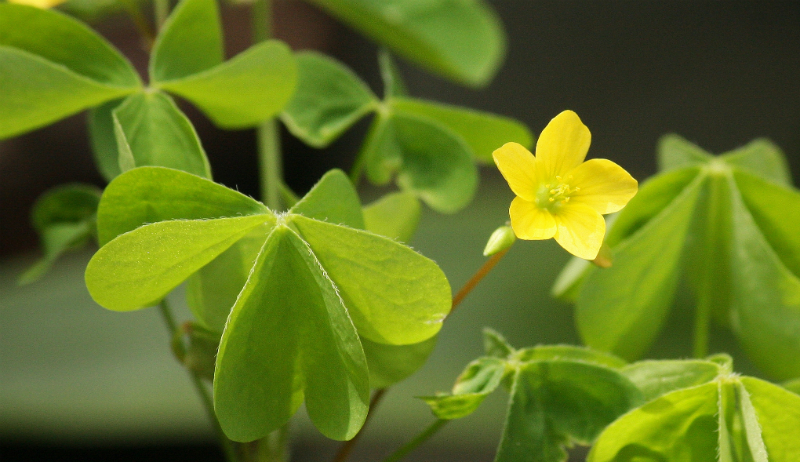
If you’re like me and love the land and all it provides, the first hints of warm weather and bits of greenery emerging from the brown landscape probably have you feeling giddy. We plant lovers aren’t busy only this time of year getting our seeds started, we’re also heading outdoors in search of spring ephemerals. Spring foraging can be exciting as we rediscover the plants that have been dormant over the long, dark winter months, and that can offer us nourishment as we break out of winter’s clutch.
Some common plants that spring foragers hunt for, including dandelions, chickweed and plantain, are easy to find and have amazing benefits, but let’s look at a few less-considered plants that you can “forage” new relationships with this year.
1. Redbud (Cercis canadensis)

In my region, the blooming of the Eastern Redbud tree is a sure sign that spring has arrived. Although some foresters consider it a “trash tree” because it’s one of the first trees to emerge in a newly wooded area, almost in a weed-like fashion, I believe it’s far from rubbish. Not only does its showy flowers make the landscape come alive in early spring, it’s a little-known fact that the flowers and fruits of this tree are edible.
- How to Spot It: You can’t miss the redbud tree’s purplish-pink flowers when they emerge in March to April, and its heart-shaped leaves are a dead giveaway to its identity. The tree itself isn’t tall—about 40 feet—with a rounded crown.
- Where to Find It: woodland areas and roadsides in the eastern half of the U.S.; it’s also often planted as an ornamental
- Parts to Pick: flowers, fruits, leaves
- How to Use It: The flowers are sweet, and while they make a beautiful addition to a salad, you can add them to just about anything you’re cooking this season for a boost of vitamin C. I’ve seen recipes for redbud spring rolls, muffins and jelly. You can also pickle the buds as a local alternative to capers. The fruits are edible, as well, and being in the legume family, look and taste just like peas.
2. Cleavers (Galium aparine)

Cleavers, also called bedstraw, is one of my springtime favorites I find when foraging because of its historical use. Because of this plant’s propensity to stick—or cleave—to itself, it was once used to create a sieve for straining milk. It was also used for stuffing mattresses.
- How to Spot It: Cleavers is one of the first bits of greenery to emerge in spring. It can be identified by groups of eight delicate, lance-shaped leaves whorled around a flimsy stem. When you stroke the plant, it will feel sticky, and if you pick it, it will stick to your clothes or itself.
- Where to Find It: thickets across the U.S.
- Parts to Pick: aerial parts
- How to Use It: Cleavers is best used fresh, not dried, and is great in herbal teas. Considered one of the best blood-purifying herbs, its timing is perfect for helping clear out the buildup of winter crud in the body, and it excels at treating swollen lymph nodes, bladder infections and skin eruptions such as psoriasis. I love how the ancient herbalist Nicholas Culpeper talks about using it to bathe the aching feet of travelers—I imagine a good soak in cleavers this time of year helping wash away the heaviness of winter, leaving you feeling light and energetic.
3. Wood Sorrel (Oxalis stricta)

When foraging, I often find these wild shamrocks with delicate yellow flowers growing at the base of trees in spring. They are high in oxalic acid (also found in spinach), which gives it its sour flavor.
- How to Spot It: Wood sorrel has three heart-shaped leaves that resemble clover and yellow, five-petaled flowers.
- Where to Find It: thickets across the U.S.
- Parts to Pick: aerial parts
- How to Use It: Wood sorrel makes a great wild addition to your spring salad greens. Use it in fresh salads and soups, as a flavoring, or as a tea sweetened with honey. As with redbuds, your imagination is the limit when it comes to its use. I’ve seen recipes for wood sorrel sauces to accompany seafood, wood sorrel tarts, wood sorrel smoothies and more. It has cooling, astringent, diuretic properties, which can be helpful during the transition from cold to warm weather this season.
- Other Considerations: Consume greens or vegetables containing high amounts oxalic acid—such as wood sorrel, spinach or broccoli—as part of a varied and balanced diet. While oxalic acid is a naturally occurring and needed nutrient, high amounts can cause problems, particularly if you have rheumatism, gout, arthritis or kidney problems. When in doubt, steaming or blanching foods containing oxalic acid can lessen the potency.
4. Cinquefoil (Potentilla spp.)

Known colloquially as the five-fingered plant, cinquefoil resembles a hand and as such, is said to guard against meddling and interference. I’m always fond of the folk stories attached to plants and am delighted when this sweet plant in the rose family emerges.
- How to Spot It: Cinquefoil has five-toothed leaves in a hand-like shape and yellow flowers with five rounded petals.
- Where to Find It: fields and wooded areas in the eastern half of the U.S.
- Parts to Pick: aerial parts, roots
- How to Use It: Cinquefoil has many medicinal uses. As a highly astringent herb, it can be used treat illnesses such as diarrhea and thrush. It also can be used for pain relief, particularly for hand pain. You can juice the herb and mix it with honey to help remedy a sore throat. Young shoots and leaves can be used as a spring green.




